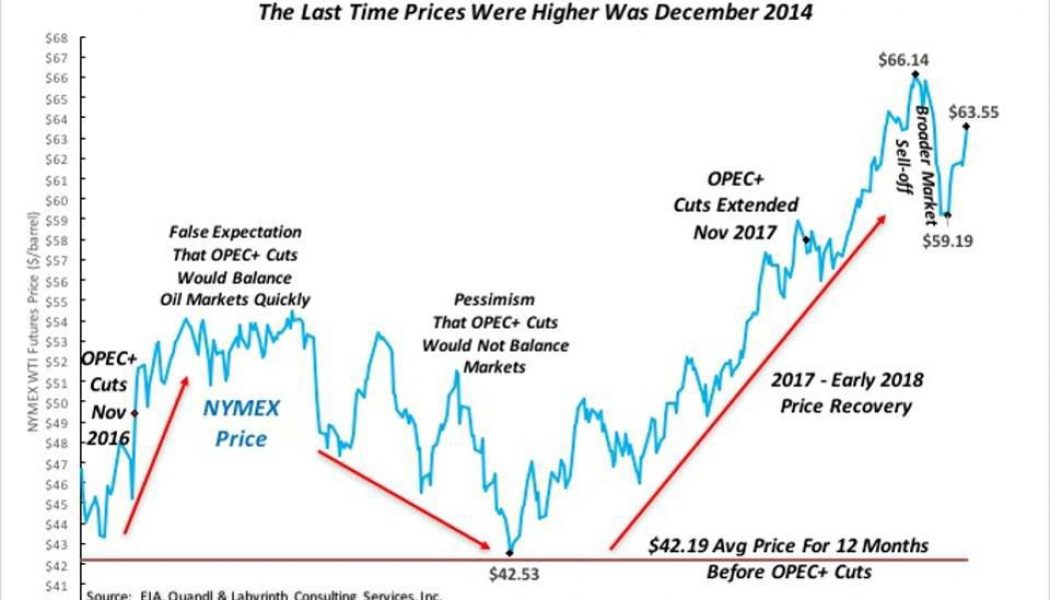WTI
Oil Prices Are At A Crossroads – Is Art Berman Sounding The Alarm?
Art Berman was highlighted in a shared article a few weeks back here on Oilconvo, and he’s contributed articles from Forbes and other publications. In his most recent article Art is highlighting the recent swings in WTI – from a 3 year high at $66, then dropping to $59.19 in a matter of days, only to see it recover 70%. I won’t try and summarize his entire article as it’s worth a read, links provided below. What I like most about the article is a simple truth. Through all of the data there is a warning or caution, one that I agree with. The IEA and EIA have indeed promoted a widespread belief that U.S. tight oil production will surge in 2018 and 2019. Some estimates have put the US as the potential largest oil producer in the world in the near future. Producers and analysts claim...
US crude rises 1.2%, settling at $61.34, boosted by Saudi comments and a weaker dollar
Oil prices extended gains on Thursday as a weak dollar and supportive comments from Saudi Arabia outweighed record U.S. production and rising inventories. U.S. West Texas Intermediate (WTI) crude futures ended Thursday’s session up 74 cents, or 1.2 percent, at $61.34 a barrel, extending the 2.4-percent gain the day before. Brent crude futures pared earlier losses and were down 2 cents to $64.34 per barrel at 2:29 p.m. ET, after Wednesday’s 2.6-percent climb. The premium of Brent over WTI was near its lowest in six months. The dollar was approaching the 3-year low hit in late January. A weaker dollar makes oil and other dollar-denominated commodities cheaper for holders of other currencies. “I’m surprised that oil prices are falling today given the weaker U.S. dollar. Curre...
The Oil And Gas Situation: Volatility Returns, As The Market Overreacts
After a 7-month period of remarkably low volatility in the global crude oil markets, the last two weeks have seen a return of turbulence. The sudden correction that has hit stock markets around the world has in turn diminished stability where crude is concerned. A 10 percent drop in the Dow Jones Industrial average was met by a 10 percent drop in the price for WTI, as a strengthening dollar, a jump in the U.S. rig count and the preliminary announcement by the U.S. Energy Information Administration (EIA) that domestic production set a new record of 10.25 million barrels of oil per day during the final week in January led to a predictable reaction in the trader and investor communities. Suddenly, those $55 hedge contracts some U.S. producers entered into during Q4 2017 aren...
































